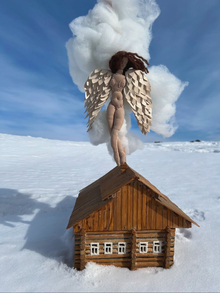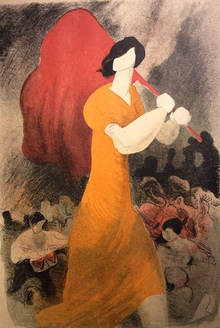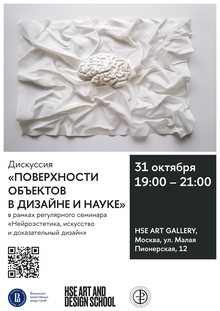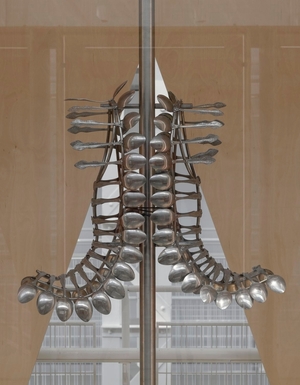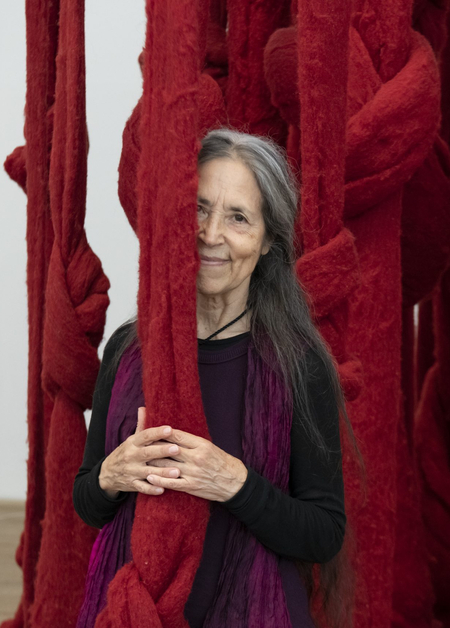
Strategies for artistic resistance: women in modern art
Within the framework of the international conference «Theory and Practice of Art and Design», the Art Place project held an open seminar from the «Acting Persons» cycle. An analysis of the artistic trajectory.» This series of seminars focuses on how external circumstances, the political context, including traumatic events, repression, and wars, affect the work of artists. We’ve turned to Irving Goffman’s frame theory, looking at different situations and what they have to do with changing the way artists work. Previous meetings of this cycle focused on Vadim Sidur and the history of the Red House artists. In an open seminar on 6 April, we addressed women artists, whose creativity has much to do with the context of dictatorship.
A clear example is the work of Chilean artist Cecilia Vicuña (Cecilia Vicuña), who is involved in collective and pedagogical practice, and studies the issues of memory and oblivion.
Within the framework of the seminar, we followed its artistic trajectory and sought to find points that influence changes in creativity and enable us to see how its work is intertwined with the external context and the search for personal forms of expression. The issues that we have addressed on the basis of Vicuña ' s work are related to, and are they at all? How is there a transformation, a change in the context of an artist’s creativity? And can we talk about the existence of a particular female language of resistance? The seminar was attended by Tatiana Mironova, Natalia Smolanskaya, Polina Lukna, Stanislav Milovidov, Victoria Belonenko.
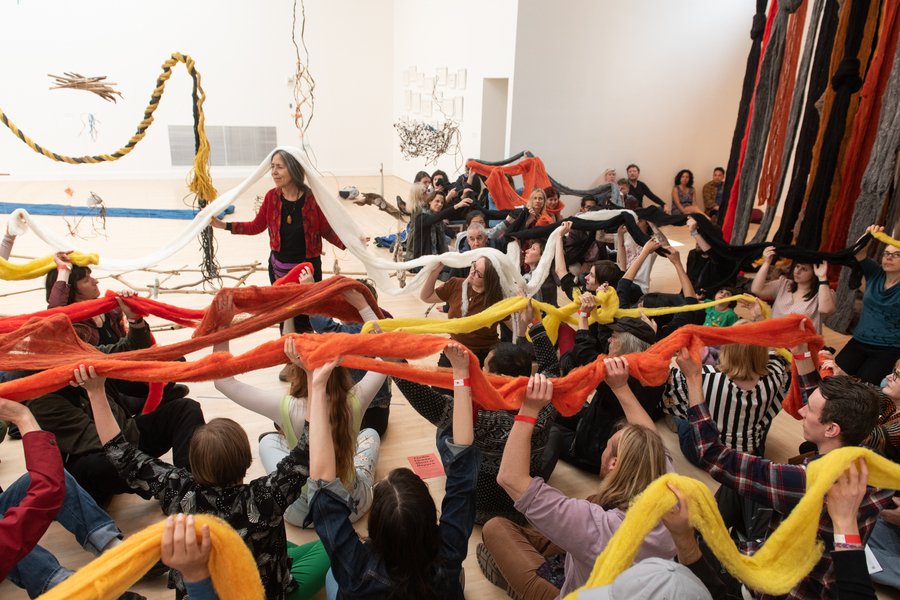
Cecilia Vicuña: About to Happen expansion. Henry Art Gallery, Seattle. 2019-20. Source: Artpapers.org
Cecilia Vicuña’s artist for the international art community was «opened» most recently: it appeared in the archives of the Artforum in 1992, its first major retrospective in the 2010s. But in the last Venice Biennale, she received an honorary Golden Lion for her contribution to art, and in general her art is gradually beginning to fit into the global history of art, the history of Chilean art, and the history of art related to resistance practices. For a long time, Vicuña was not regarded as a modern Chilean artist, nor was he regarded as an artist whose practices were associated with confrontation and the struggle against dictatorship. Her name is not even mentioned in the book «Avant-garde stage of Chile», which describes art in the 1970s and 90s, although she was quite active in art at that time.
Cecilia Vicuña. Precarious. 1967-2009. Source: Ceciliavicuna.com
Cecilia Vicuña. About to Happen exibition. Henry Art Gallery, Seattle. 2019/20. Source: Artpapers.org
It later creates the same facilities for museum spaces. These are unstable forms in which she is embroiled in various ethnic motives. In general, the sense of instability expressed by such fragile objects is strongly reflected in all its creativity, beginning with the first works. The first personal exhibition of the artist Otono (Autumn) was held in 1971 at the National Museum of Fine Arts in Santiago. It was a space filled with dry leaves where viewers could interact with each other, throwing leaves into the museum halls. This exhibition takes place at a time when Chile is in charge of El Salvador Alende. At this time, Vicuña works actively as a poet and artist, and organizes an artistic and poetic group, Tribu No., for which she writes a manifesto. Members of this group create anonymous works, interventions in urban space, murals, and poems into city space.
Cecilia Vicuña. Otoño. 1971. Source: Ceciliavicuna.com
In 1972 Cecilia Vicuña moved to London, a year later a coup d ' état took place in Chile, as a result of which Augusto Pinheiro took power and subsequently established a dictatorship in the territory of the State. Against this background, Cecilia Vicuña remains in London and participates in the organization of a group called «Houses for Democracy», which actively supported El Salvador Alende during the military coup and tried to draw attention to the situation in Chile. In 1974, the Humanities for Democracy held a large festival in London, attended by a large number of contemporary artists. At that time, Cecilia Vicuña’s activities became active and political, but the artist did not return to Chile.
In 1975, Vicuña moved to Colombia to the city of Bogotá, where he began to work actively with the local Indian culture. This culture is being sunk by the artist through familiarization with experimental music, researchers and representatives of the local community. In creative terms, she does a lot of master classes at this time, often working with children. During this period, the artist begins to work actively with textiles, tactile invoices, and at the same time goes into education, teaching, intuitive learning.
In 1980 Cecilia Vicuña came to New York to meet César Paternosto, whom she married very quickly, and stayed in New York. Here, the artist becomes part of the feminist group Heresies, where Vicuña invited Lucy Lippard. However, according to the artist herself, she was unable to fit in with the local feminist community because there was a lack of acceptance on both sides: she was not accepted by the feminist movement, and the artist herself was not accepted by the Eurocentric theoreticalization of the movement. Vicuña herself did not consider herself a feminist artist in terms of belonging to a movement; she was closer to a feminist who lived, from childhood, in little girls, a feministism associated with experience and experience than with texts and theories.
Cecilia Vicuña. Quipu Austral. 2012 Source: Artsandculture.google.com
In 1984, Vicuña began to live between the two cities (New York and Buenos Aires) and produced a collection of Palabrarmas, which includes another long series of works by an artist. It is based on the idea that words can become weapons, that playing with words can create space for interaction, reflection, and association. Weapons in this sense are a way to think critically about language, social interaction, the future and the past. Chile’s military coup as a trauma situation became an important context for this series at a time when the artist was not at home and could not return to his homeland. In games with words like images, it spreads words into individual components, and through interspersion of letters and images, new images and meanings are born.
Cecilia Vicuña. AMAZONE PALABRARMAS. Source: moma.org; campoderelampagos.org / Cecilia Vicuña. Palabrarma. 1974. Source: uggenheim.org
Another key form of artistic practice, which also went through the artist ' s work, was the Kipu (quipu). It is an artistic form linked to the written node form of transmission of information from Incas.
Cecilia Vicuña. Paño e' sangre. 1973-1974. Source: Ceciliavicuna.com
In this work, it looks for local, authentic knowledge, often creating large-scale designs that have different motives for Vicuña ' s creativity. Vicuña, in general, devotes a great deal of its art to decolonization issues by trying to oppose the image imposed by Europeans by referring to folk music, Indian culture, materials such as fabric, wool, etc. The design of the kipu is the most popular in large museums and in various international biennals.
Cecilia Vicuña. Quipu Womb. 2017 / Cecilia Vicuña. Brain Forest Quipu. 2022. Source: tate.org.uk
Another important aspect of Cecilia Vicuña’s work was her painting. Many of her paintings didn’t survive because when she created them at the beginning of her career, they weren’t interested in anyone. As a result, most of her paintings were lost in the process of moving. Subsequently, many paintings were repainted by the artist in memory, against the background of increased interest from galleryists and artistic institutions. This point seems interesting to understand the artistic trajectory of the artist, because at different points in time, something is valuable to the artist, but not to her environment, and at another point in time, the situation is changing dramatically, and the value is already being acquired by completely different objects and works.
Cecilia Vicuña. La Vicuña. 1977. Source: 1stdibs.com / Cecilia Vicuña. Carl Marx. 1972. Source: Artnews.com
Cecilia Vicuña. Little House to Think What Real Situations Me. 1971. Source: Lehmannmaupin.com
Cecilia Vicuña. Balsa Snake Raft to Escape the Flood. 2017. Source: Lehmannmaupin.com
Issues discussed in the discussion: How can art respond to dictatorship? Does it always react? How specific is the practice of women’s resistance in modern art? How much need to be considered separately? Why do many artists receive later recognition? Why are they at a different level in the history of art than artists? How are the work of Cecilia Vicuña updated in today ' s political context?
Cecilia Vicuña, Autobiography. 1971. Source: uggenheim.org
Video recording of the seminar:
With previous workshops of the series, «Persons in progress. An analysis of the artistic trajectory is available on the project’s website „The art site“.
